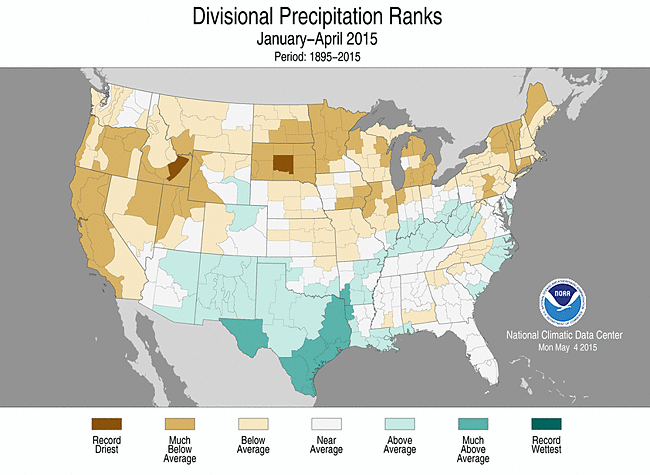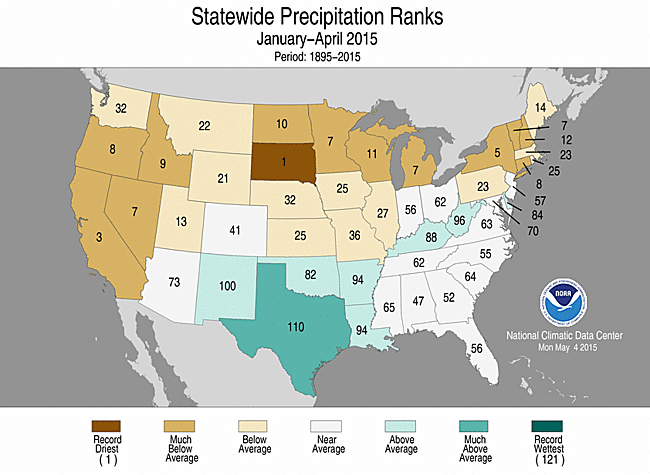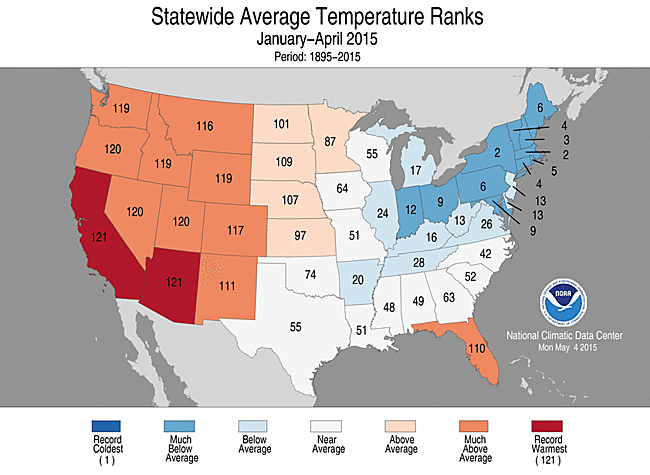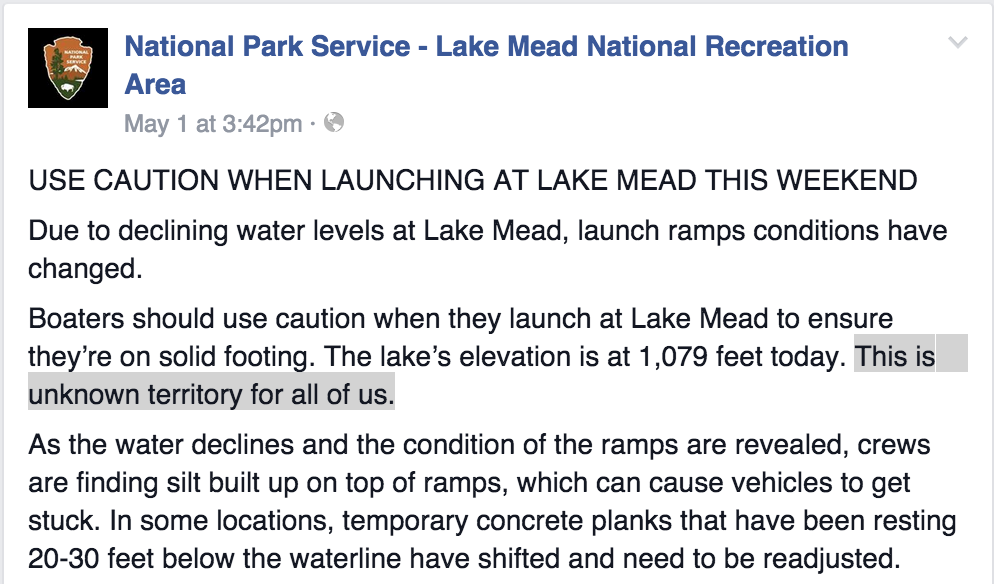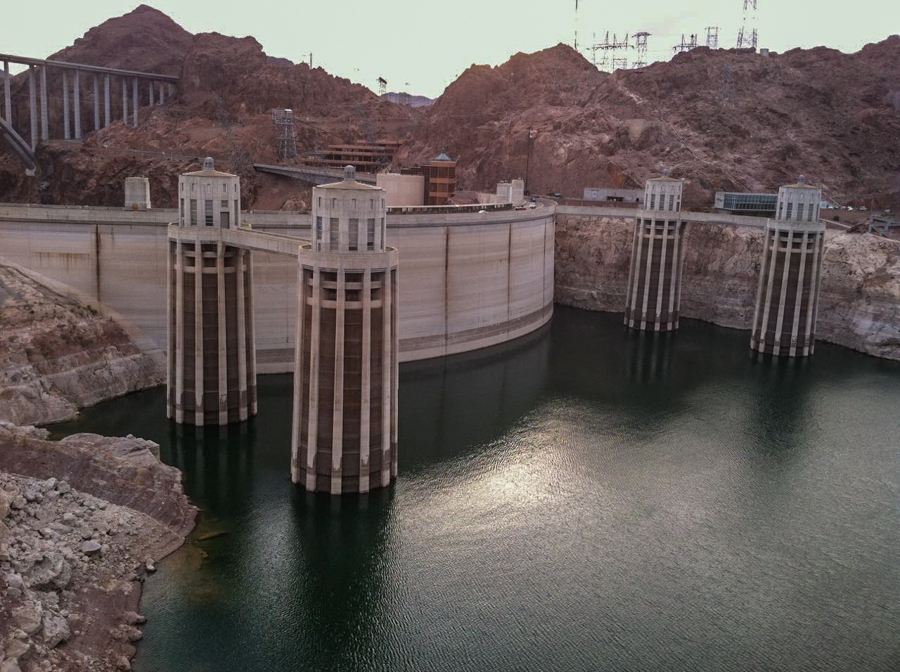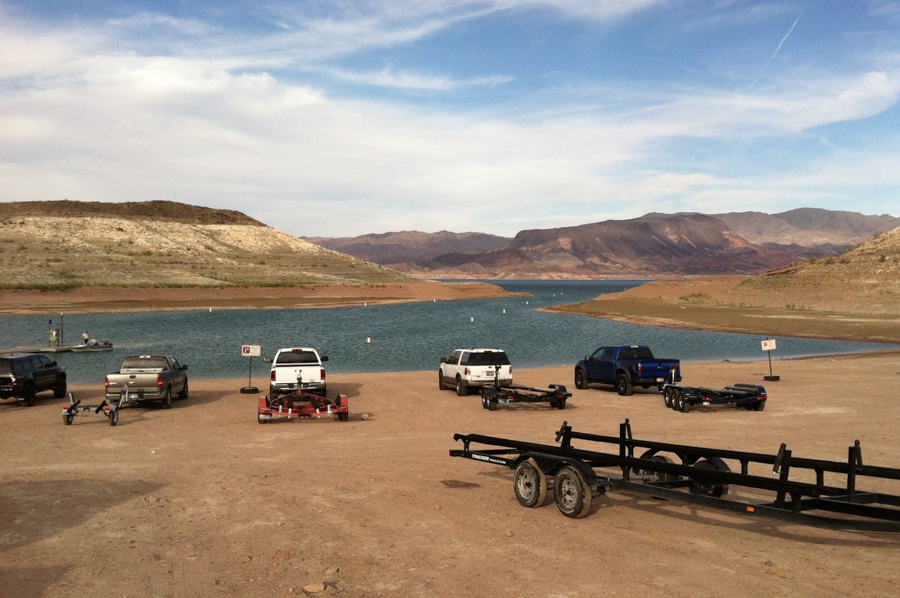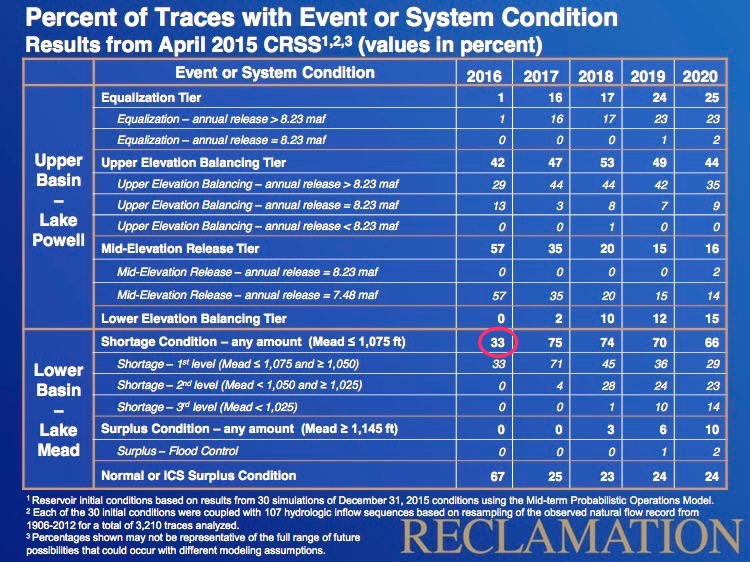Arizona lawyer Grady Gammage, a member of that state’s water establishment, opened a conference I attended last week with an explanation of why he became so engrossed in trying to understand “the Law of the River,” that bundle of laws and customs that govern the management and distribution of the waters of the Colorado River. When he first ran for the board of the Central Arizona Water Conservation as a self-described water novice, he kept confronting this: “Every time something came up, someone would say, ‘You can’t do that under the Law of the River,'” Gammage told the audience. “The ‘Law of the River’ is essentially the ‘Code of the Pirates.'”
To an audience of mostly water lawyers, it was a laugh line.
A “Code of the Pirates”, formalized among the seemingly rule-less buccaneers of the 17th and 18th century, adopted by each group, is a reminder that we all need rules.
Consider this, from the code adopted by those who sailed under the Welsh pirate Henry Morgan:
Every man has a vote in affairs of moment; has equal title to the fresh provisions, or strong liquors, at any time seized, and may use them at pleasure, unless a scarcity (not an uncommon thing among them) makes it necessary, for the good of all, to vote a retrenchment.
We did that with the Colorado River, adopted a code to govern its operation. The Law of the River is ill-defined, in part a collection of contracts, statutes, and court decisions (the most important of them gathered here), in part a set of informal norms often difficult even for participants to articulate. It also is what I have come to call “the network” – the group of people, many of who were gathered in a windowless conference room at Planet Hollywood in Las Vegas last week listening to Gammage give voice to something I puzzle over: “Why is water different? Why is water special? Why is water so complicated?”
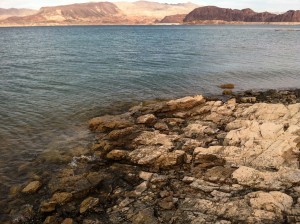
Rocks that haven’t been above water since 1937. Boulder Harbor, May 1 2015, by John Fleck
It was an opportune time for the Pirates to convene. Five days before the conference Lake Mead – the great reservoir just down the road from Planet Hollywood that is a harbinger of the Colorado River’s fate – dropped to a record low level, less water than at any time since it was filled in the 1930s. Then on Wednesday, the Bureau of Reclamation told a gathering of the Pirates that odds of passing another critical threshold, one that would trigger shortages (especially in Arizona), was rising with the dwindling winter snowpack.
The last 16 years, Bureau of Reclamation Lower Colorado River manager Terry Fulp told his shipmates, has been among the driest stretches of this length in the Colorado River Basin in the last 1,200 years. “That should give us all pause,” Fulp said.
In fact, as Fulp pointed out, the massive storage in the system, dams that were filled when the drought began in the late 1990s, has served water users well. It was their purpose – to store water in wet periods for use in dry – and as a result water users downstream can still shower and grow alfalfa in the desert sun.
But the time of reckoning has arrived, to borrow from Morgan’s Pirate’s Code: “a scarcity … makes it necessary, for the good of all, to vote a retrenchment.”
The Southern Nevada Water Authority’s Colby Pellegrino put up a slide showing the latest work by her staff that shows that Lake Mead is likely to stay at low levels for a while, levels at which there is not quite enough water to meet all the current downstream demands. “Shortage,” she said, “is the new normal on the river.”
The “retrenchment” is possible, a new management regime in which the basic structure and function of communities downstream can share in this new normal, each in their way using less water while retaining that which they value most. But the Pirates need to get on it.

